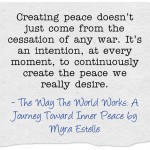I remember sitting in one of my first design classes at college when I was studying architecture, and I suddenly felt the two sides of my brain connect together, as if they were physically linking to each other, in a way they had never done before. It felt like two trains hooking up on the tracks, and yet it was happening inside my head. It didn’t hurt at all, and there were no physical repercussions. I simply continued with my studies and went on to graduate. People have since enjoyed my designs, so no harm was done.
What I’ve learned since then is that the brain has two parts to it, the left brain and the right brain, joined to each other by something called the corpus callosum. This is the part of the brain that connects the left and right cerebral hemispheres and facilitates communication between the two sides. What I had felt in that classroom was probably the slight expansion of the corpus callosum in my head, as it allowed the freer flow of information from one side to the other and helped me to coordinate my practical abilities with my creative skills.
Neuro-scientists and kabbalists explain that each side of the brain has its own distinct function, and these two parts work together to give us the understanding we have about life. So when we gain more information about each side, we can understand our thought process more clearly.
The left brain deals with the intellect, the factual details of a thought, whereas the right side of the brain is more creative, and gives us the overall view of the whole concept behind those details. When they work together in concert they provide us with a clearer understanding; when one side overshadows the other, we tilt our view to a more limited perspective.
In kabbalah, the influence of the right side is called chochma, and the influence of the left side is called bina. Chochma gives us the concept, while bina fills in the details, to give us a clearer understanding of the idea. They usually work in harmony so that we can gain an overall comprehension of the various aspects of a situation, which is when we’re able to reach da’at.
When we look at politics, for example, it’s actually the left side of the political aisle that has a broader view of each situation, while avoiding some of the details, like how to pay for the good they want to do. Whereas the right side of the aisle is so concerned with the way to pay for any item, that they hold back on fulfilling the need for those items. So the left side of the political community is reacting more from the right side of the brain and the right side of the political aisle is reacting more from the left side of the brain! And this creates a conflict that paralyzes the ability to take any action that can move us forward into a brighter future.
Other than having everyone sit in a design class to expand their corpus callosum, we need to see what we’re all doing to each other as we take sides in this tug of war between left and right.
The ten sephirot teach us that we have to coordinate all the various aspects of our mind and heart so that we can come into balance from within our own self. When we’re able to coordinate and balance our individual sense of being, our thinking can come into harmony with the flow of greater goodness that’s in the world. In Judaism we speak of this as Divine consciousness, because this can make our experience of life feel divine.
Join us as we discuss some of the teachings from our sages about balancing the sephirot in our lives, and follow with a short, silent meditation on the Shema.
Date: Saturday, June 21st
Time: 6.45 pm. (Before Mincha)
Location: HIR

